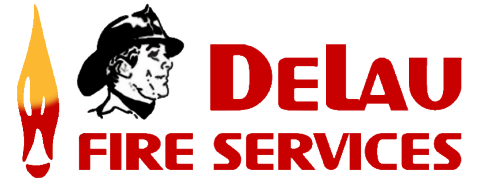Clean Agent Fire Systems
Specific hazards within office, industrial, commercial, and institutional facilities require special attention. These hazards include computer rooms, clean rooms, telephone switches, art and historical applications, and any facility where water damage from sprinklers must be avoided at all costs. Various approaches and chemicals are available to provide a custom solution to your particular hazard.
Typical Applications of Clean Agents
Clean Agents are beneficial for hazards where:
An electrically nonconductive agent is required
Cleanup of other agents presents a problem
Hazard obstructions require the use of a gaseous agent
The hazard is usually occupied and requires a non-toxic agent
Types of hazards typically protected with clean agents include:
Computer rooms
Sub-floors
Control rooms
Tape storage rooms
Critical file storage rooms
Telecommunications facilities
Clean rooms
Electric switchgear
Vaults
Process equipment
Engine test cells and other test bays
Libraries, museums, art galleries, archives
FM-200 (HFC-227) Fire Suppression Systems
HFC-227 (FM-200), chemically known as heptafluoropropane, is a fire suppression agent manufactured in the United States by Great Lakes Chemical (FM-200) and DuPont Corporation (HFC-227). FM-200 is a replacement agent for the ozone-depleting Halon 1301, used extensively before 1994. Just as with Halon 1301, people can be exposed to average extinguishing concentrations of FM-200 without fearing health problems. FM-200 is safe, has no-residue protection for Class A, B, and C-type fires, and has zero ozone depletion potential.
Often, FM-200 systems are used to protect critical installations formerly protected by Halon 1301; some of these areas include:
Data Processing Centers
Telephone Switches
Process Control Rooms
Art and Historical Collections
Facilities where water damage from sprinklers must be avoided at all costs
The extinguishing agent is stored in cylinders or spheres in a typical system. A piping network and nozzles deliver it to the hazard.
The fire detection and control network is vital to the system's functioning. Typically, detectors sense the presence of smoke in the protected facility. The detection and control panel then sounds an alarm, performs pre-determined auxiliary functions, and releases agents into the protected area.
At DeLau Fire Services, our fire protection specialists are factory-trained in the design of FM-200 fire suppression systems. Engineered drawings will be prepared using the latest versions of Auto Cad. You will be supplied with hydraulic flow calculations and other engineering data detailing the expected performance of your FM-200 system.
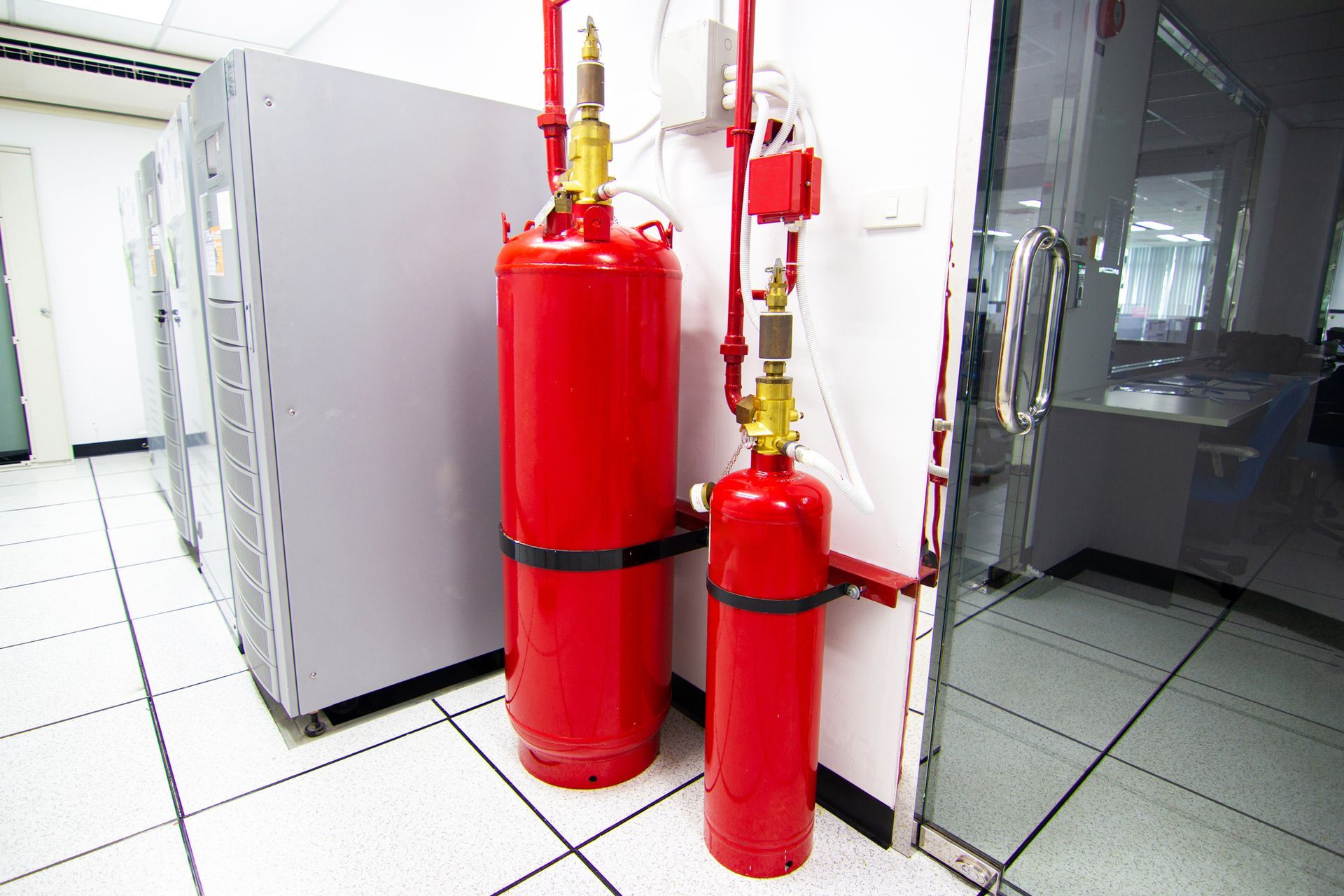
Inergen Systems
Inergen is an environmentally friendly three-dimensional fire suppression agent replacing Halon 1301. Critical facilities such as data processing rooms, telecommunications switching facilities, process control rooms, and others require a non-water-based extinguishing agent that:
Is electrically nonconductive
Is safe for use in human-occupied facilities
Will not damage sensitive electronic equipment
It has zero ozone depletion, zero global warming, and zero atmospheric lifetime
Inergen is a blend of three naturally occurring gases–Nitrogen, Argon, and Carbon Dioxide. The strategy of fire extinguishment employed by an Inergen system is like no other modern suppression system in use today. An Inergen system lowers the oxygen content of the protected area to a point sufficient to sustain human life but insufficient to support combustion. It's that simple.
Because it is not a chemical agent, Inergen does not produce a heavy fog like other extinguishing agents, so escape routes remain visible.
The Inergen agent discharges through specially designed nozzles. These nozzles are fitted with discharge deflectors to minimize turbulence in the protected area.
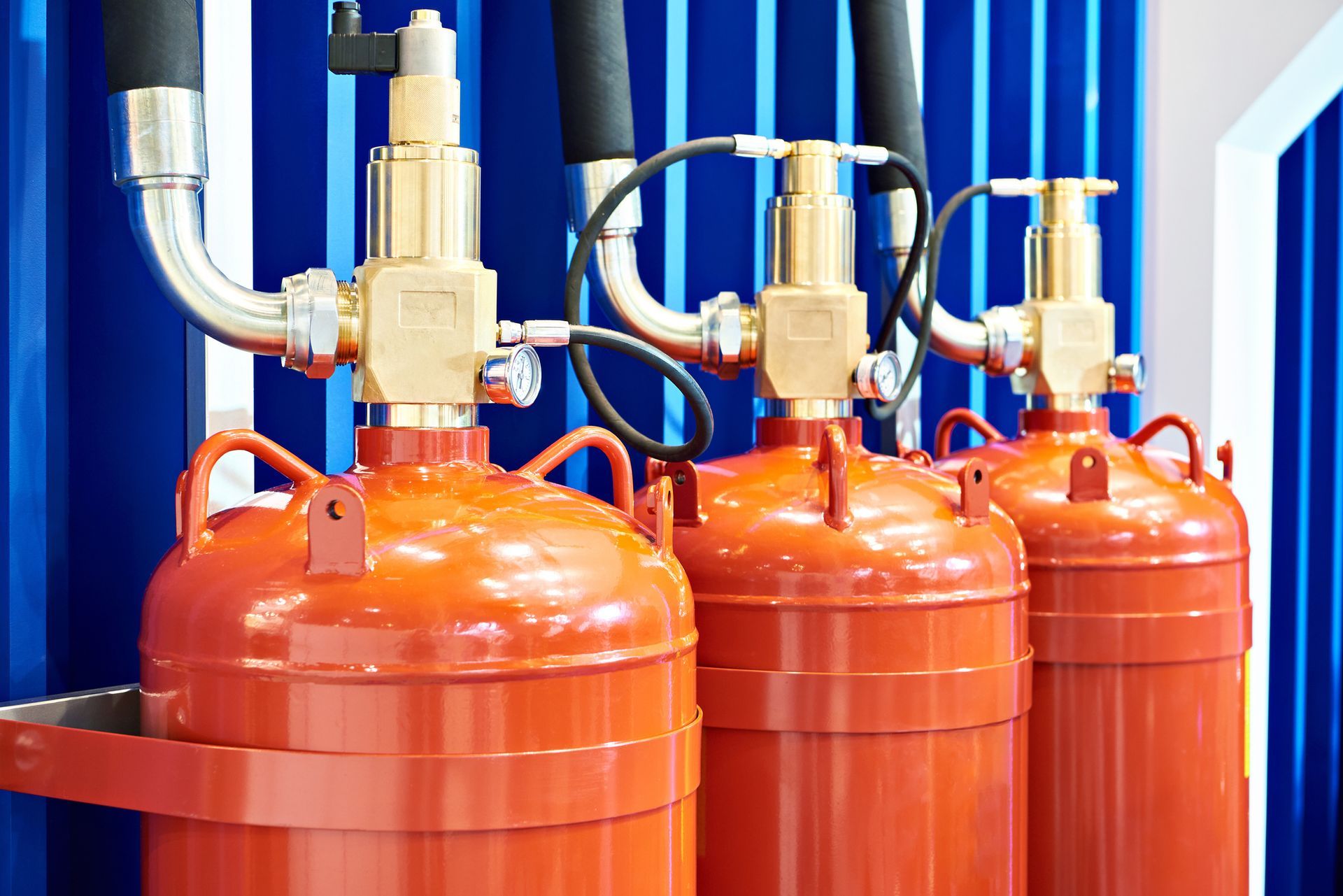
Carbon Dioxide Fire Suppression Systems
Carbon dioxide is recommended for the protection of unoccupied facilities. CO2 is economical and can be designed as a local application or total flooding system.
At DeLau Fire Services, we install Kidde and Ansul carbon dioxide fire suppression systems. Carbon Dioxide (C02) gas has a high ratio of expansion, facilitating rapid discharge and quick three-dimensional penetration of the entire hazard area. Carbon Dioxide extinguishes a fire by reducing the oxygen content of the protected area below the point where it can support combustion. Carbon Dioxide Fire extinguishing systems typically store the agent in one of two ways: high-pressure cylinders or low-pressure CO2 tanks.
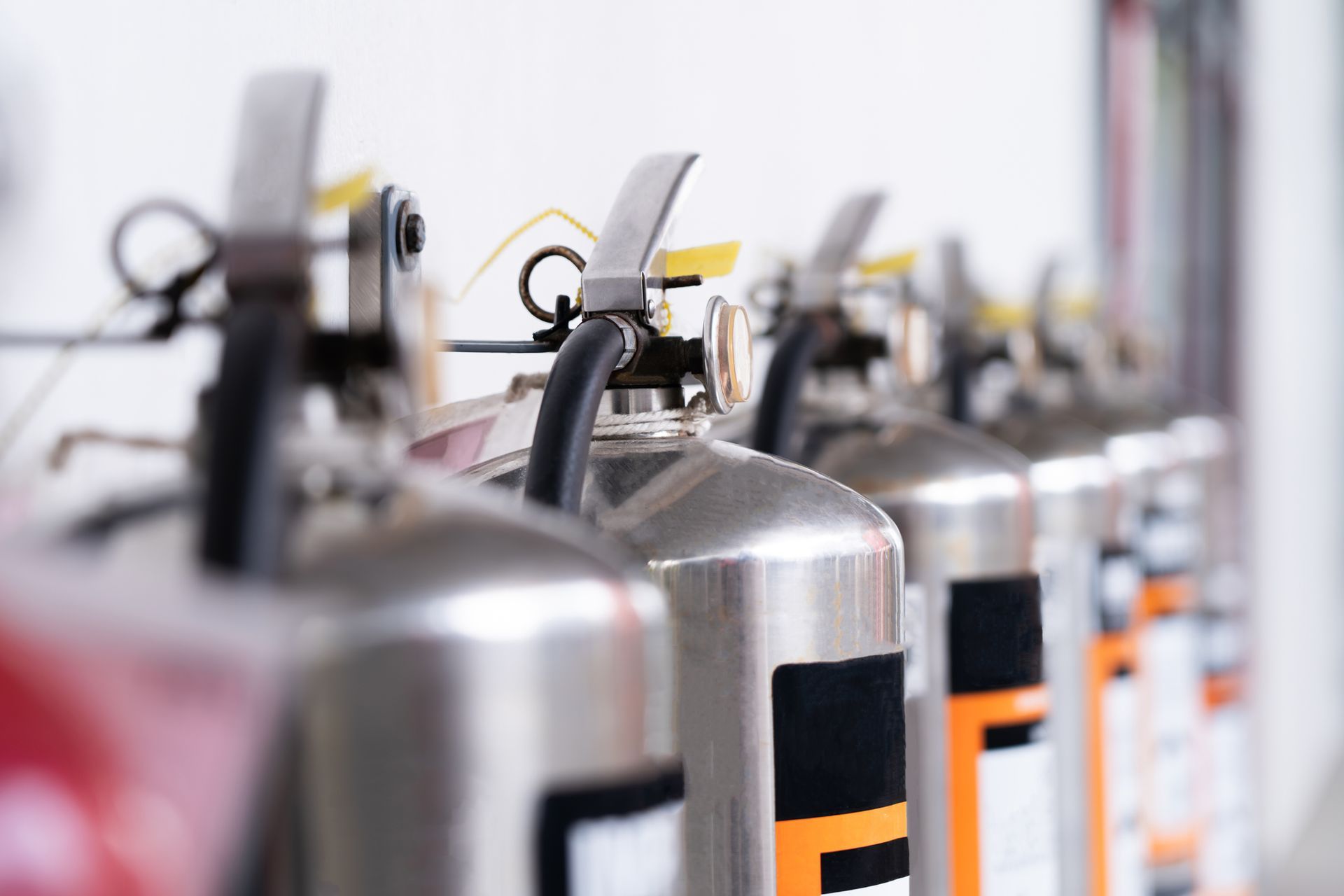
Advantages of Carbon Dioxide
When designed, engineered, and installed correctly, carbon Dioxide fire suppression systems will not damage sensitive electronic equipment. Carbon Dioxide has no residual cleanup associated with its use as a fire suppression agent. Carbon Dioxide fire extinguishing systems can be used to protect a wide variety of hazards, from delicate electronic equipment to high-voltage electrical equipment, all without causing damage to the equipment being protected.
CO2 Is Versatile
Used on a wide variety of hazards throughout the world:
- Flammable liquid storage
- Printing presses
- Mixing Operations
- Spray Booths
- Industrial Ovens
- Dust Collectors
- Paint Lockers
- Marine Applications
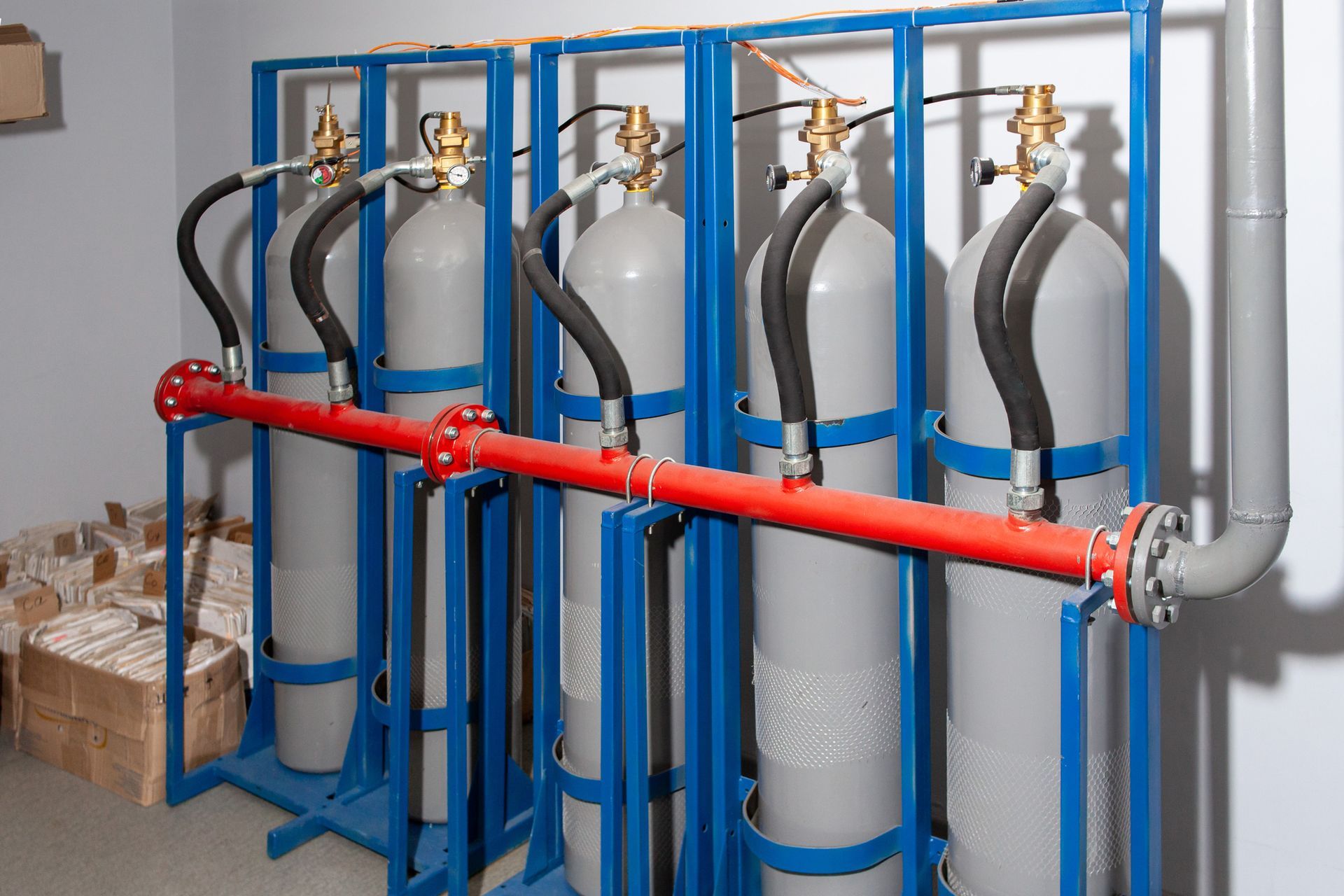
Elements of a CO2 Fire Suppression System
A Carbon Dioxide Fire Suppression system consists of one or more banks of cylinder storage containers to supply the CO2 extinguishing agent. Flexible discharge bends, or hoses, connect the cylinders to a piping manifold. The manifold, in turn, distributes the agent into the piping network. Nozzles regulate the flow of CO2 into the protected area.
A detection and control system must detect and control the fire before releasing carbon dioxide into the protected facility. We use the Pegasys addressable control panel for Kidde systems and the Autopulse control panel for Ansul systems.
Experience
At DeLau Fire Services, we have extensive experience installing and designing CO2 fire suppression systems; in fact, we have installed and maintained CO2 systems since our inception in 1986.
We have worked with major corporations to design CO2 systems nationwide for various applications. Call today to speak with one of our knowledgeable professionals.
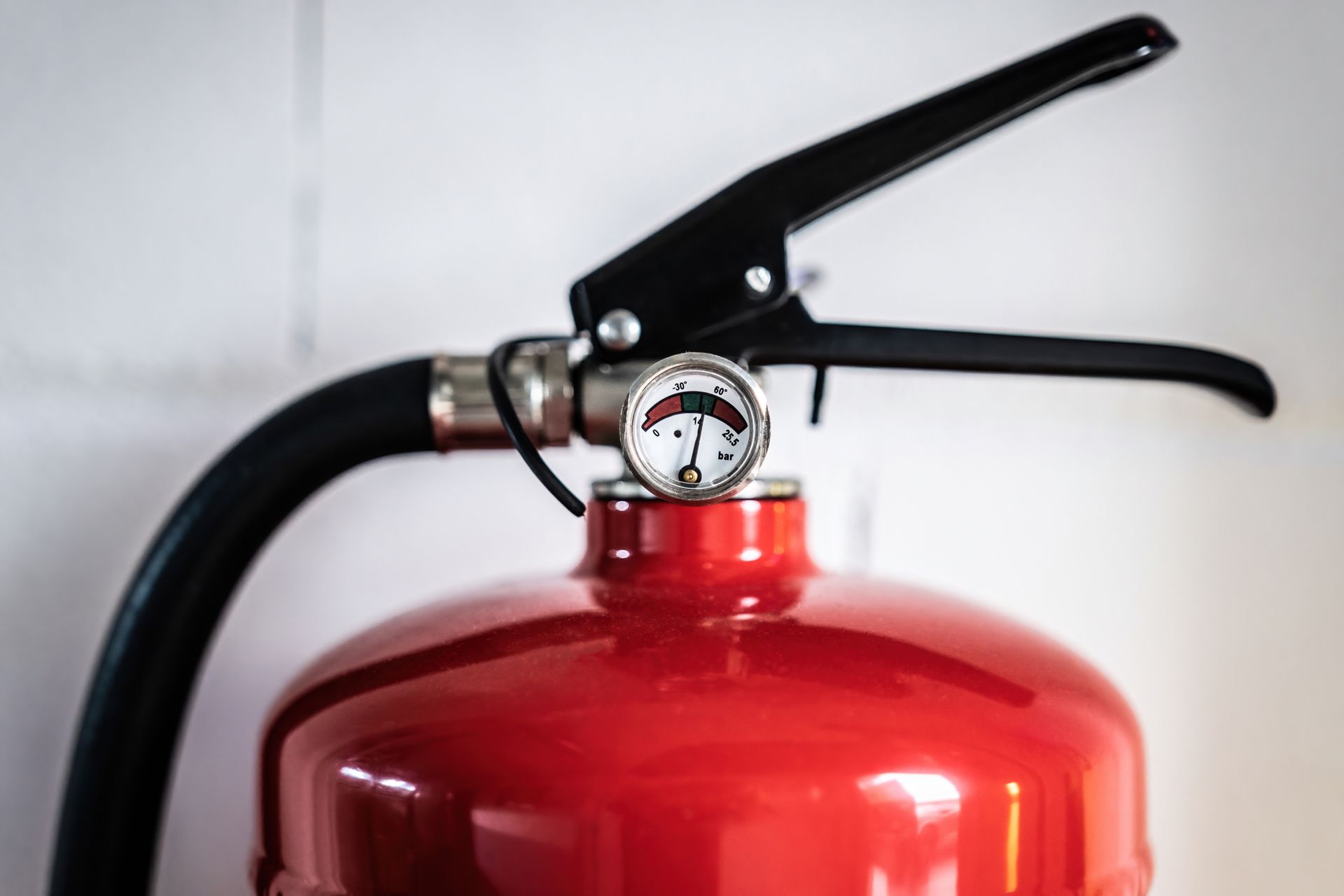
Facts About Halon 1301
The Montreal Protocol and the U.S. Clean Air Act have effectively eliminated Halon 1301 from new use throughout the U.S. and the rest of the world. While Halon has been known as a highly safe and effective fire suppressant for about thirty years, it is a member of the chemical family known as ozone-depleting agents.
As a result, The Clean Air Act dictated that production of Halon 1301 would cease by December 31, 1993. Utilizing new agents and recycling existing Halon would provide the source of fire suppressants beyond this phase-out date. It is essential to understand that the Act did not make ownership or use of Halon 1301 illegal. Instead, the Act strongly encourages the proper use and management of current Halon stocks. It only precludes any further production of Halon. As a result, many Halon 1301 systems remain in use today and recycled Halon is available to recharge these systems.
To schedule a design review, repair, service, or inspection, please visit our Contact Us page and contact the Division applicable to your needs.
Your solution is just a call away! Reach us at (517) 321-1111.
